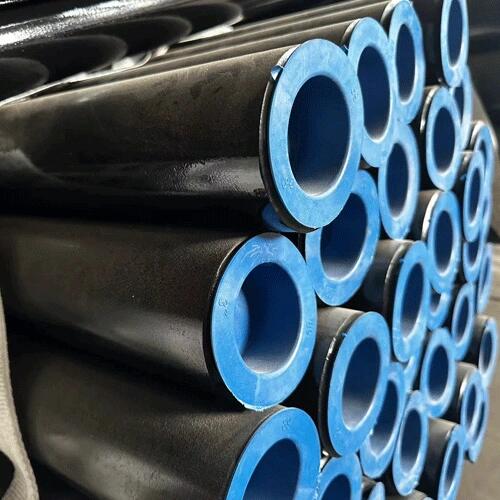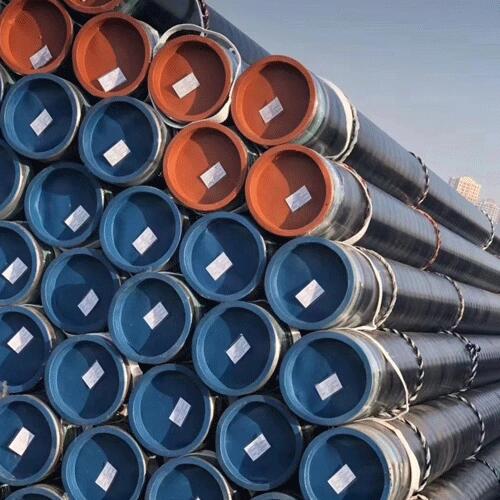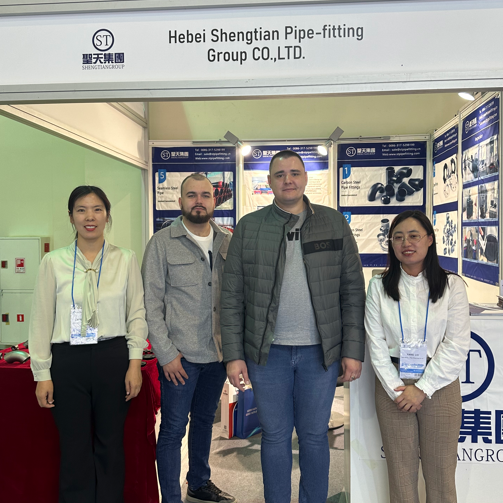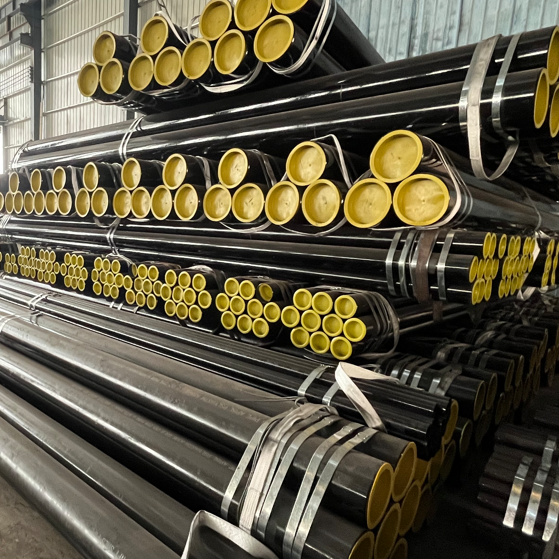BS 1387 Seamless Steel Pipes is a kind of pipe widely used in various fields, and its production process is related to the quality and performance of the product. This article will introduce the production process of black mild steel pipe, including raw material preparation, steel pipe rolling, welding and heat treatment.
1. Raw material preparation
The main raw material of BS 1387 Seamless Steel Pipes is mild steel plate. During the production process, the steel plate first needs to be cut into slabs of the appropriate size. Then, the slab needs to undergo rust removal and surface treatment to remove oxides and impurities on the surface to provide good conditions for subsequent processing.
2. Steel pipe rolling
The rolling of BS 1387 Seamless Steel Pipes is a process in which the steel slab is rolled and stretched in multiple passes to form the pipe shape. First, the steel slab is heated to an appropriate temperature, and then through multiple passes of rolling, the steel slab is gradually formed into a tube shape. During the rolling process, the size and wall thickness of the pipe need to be controlled according to the product requirements. At the same time, the rollers also need to be maintained and replaced regularly to ensure product quality and production efficiency.
3. Welding
Welding of BS 1387 Seamless Steel Pipes is the process of joining rolled steel slabs. According to the different welding methods, it can be divided into two types: long welding and spiral welding. Long welding is to weld the two ends of the steel plate to form a long tube, while spiral welding is to spirally weld the steel plate around the central axis to form a tube. During the welding process, it is necessary to select appropriate welding methods and welding materials according to the requirements of the product to ensure the quality and strength of the weld.
4. Heat treatment
The heat treatment of BS 1387 Seamless Steel Pipes is to improve its structure and performance. Generally, heat treatment includes processes such as annealing, normalizing and quenching. Annealing is to heat the steel pipe to an appropriate temperature and then cool it slowly to soften the steel and improve its plasticity and toughness. Normalizing is to heat the steel pipe to an appropriate temperature and then control the cooling rate to achieve a certain hardness and strength of the steel. Quenching is to heat the steel pipe to an appropriate temperature and then cool it quickly to make the steel reach high hardness and strength.
In addition to the above-mentioned main links, the production process of BS 1387 Seamless Steel Pipes also includes pickling, cutting, forming and surface treatment. Pickling is to remove oxides and rust on the surface of steel to improve the surface quality of the product. Cutting is to cut the steel pipe to the length required by the customer to meet different needs. Forming is to pass the rolled steel slab through a forming machine to form a specified tube shape. Surface treatment is to improve the surface quality and corrosion resistance of steel pipes. Common surface treatment methods include galvanizing, spraying, and plastic plating.
The production process of BS 1387 Seamless Steel Pipes includes raw material preparation, steel pipe rolling, welding and heat treatment. Through reasonable technological processes and strict quality control, low carbon steel pipes of excellent quality can be produced to meet the needs of all walks of life.
 Why should Seamless steel pipes be epoxy powder coated?
Why should Seamless steel pipes be epoxy powder coated?
 ASTM A106 Thick-walled steel pipe production steps
ASTM A106 Thick-walled steel pipe production steps
 Shengtian Group successfully participated in the Russian Oil and Gas Exhibition
Shengtian Group successfully participated in the Russian Oil and Gas Exhibition
 Is API 5L Black Steel Pipe Good For Air Lines?
Is API 5L Black Steel Pipe Good For Air Lines?